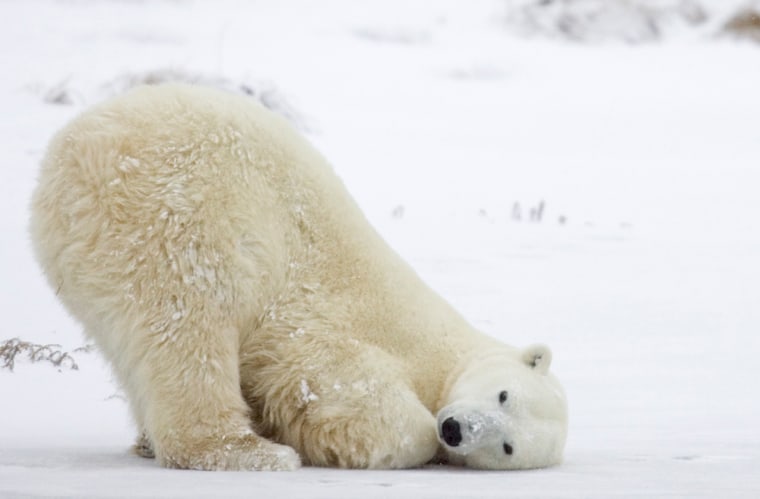Inuit hunters in Canada's Arctic say they have seen polar bears moving farther north as the polar ice cap recedes, or farther south in search of new sources of food.
The northern people who have hunted these majestic marine mammals for thousands of years say they haven't seen a dramatic decline yet in their numbers. But scientists worry that the polar bear will be pushed steadily toward extinction by 2050, to be found only in zoos, as Arctic waters grow warmer.
The bears depend on sea ice for survival. They have their pups and they hunt seal and walrus on ice floes. But the summer ice cap is about 20 percent smaller today than in 1978, the U.N. climate panel reported in February. And as sea ice shrinks, bears are forced to hunt and to fast for longer periods.
Biologists believe 20,000 to 25,000 polar bears roam the frozen Arctic, about 60 percent in Canada. The research group Polar Bears International says one polar bear population, in Canada's western Hudson Bay, has dropped 22 percent since the 1980s, about the time Inuit hunters started noticing dramatic changes in wind and weather patterns.
The trends are so troubling that the U.S. government has proposed listing polar bears as threatened under the Endangered Species Act.
